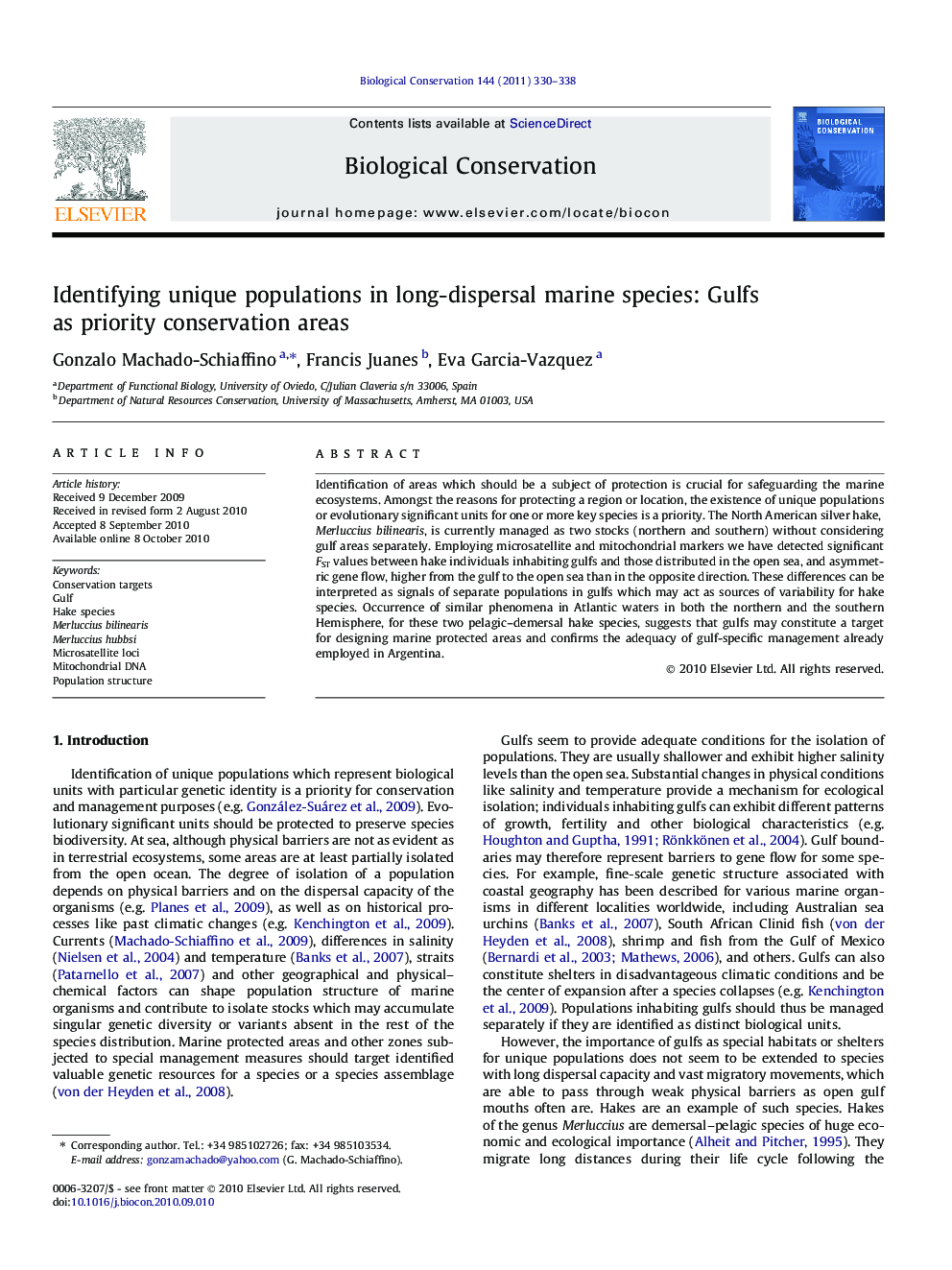| Article ID | Journal | Published Year | Pages | File Type |
|---|---|---|---|---|
| 4385692 | Biological Conservation | 2011 | 9 Pages |
Identification of areas which should be a subject of protection is crucial for safeguarding the marine ecosystems. Amongst the reasons for protecting a region or location, the existence of unique populations or evolutionary significant units for one or more key species is a priority. The North American silver hake, Merluccius bilinearis, is currently managed as two stocks (northern and southern) without considering gulf areas separately. Employing microsatellite and mitochondrial markers we have detected significant FST values between hake individuals inhabiting gulfs and those distributed in the open sea, and asymmetric gene flow, higher from the gulf to the open sea than in the opposite direction. These differences can be interpreted as signals of separate populations in gulfs which may act as sources of variability for hake species. Occurrence of similar phenomena in Atlantic waters in both the northern and the southern Hemisphere, for these two pelagic–demersal hake species, suggests that gulfs may constitute a target for designing marine protected areas and confirms the adequacy of gulf-specific management already employed in Argentina.
